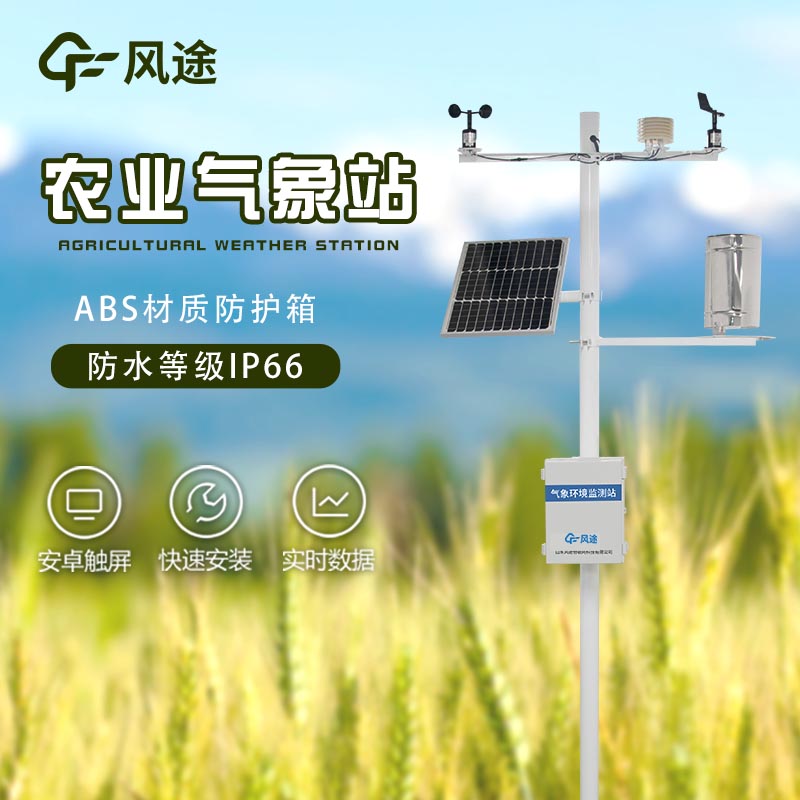Shandong Fengtu IOT Technology Co., Ltd
Sales Manager:Ms. Emily Wang
Cel,Whatsapp,Wechat:+86 15898932201
Email:info@fengtutec.com
Add:No. 155 Optoelectronic Industry Accelerator, Gaoxin District, Weifang, Shandong, China

Sales Manager:Ms. Emily Wang
Cel,Whatsapp,Wechat:+86 15898932201
Email:info@fengtutec.com
Add:No. 155 Optoelectronic Industry Accelerator, Gaoxin District, Weifang, Shandong, China
time:2023-06-28 09:24:11 source:Weather Station viewed:670 time
A weather station is a commonly used meteorological instrument that provides detailed meteorological data and combines it with specific application scenarios, industries and specific options for the various sensing hardware devices that make it up. This equipment enables the timely and accurate detection and recording of weather changes and other information to provide a reference for improving agricultural production efficiency.
The compact size and low cost of the monitoring system are the main advantages of the agro-weather station. It provides a fine meteorological service for the village groups and other production units in the agricultural production area, especially for the combination of observation data and agricultural production management for comprehensive analysis and guidance of production operations.
The station uses a multi-factor integrated sensor to monitor CO2, barometric pressure, rainfall, wind speed, wind direction, light level, air temperature and humidity, soil temperature and humidity and PM2.5/PM10 simultaneously. It is suitable for field operations and remote sending of letters to farmers via wireless LAN. The farmers are able to visualise the weather indicators through Android/IOS mobile phones, computers, or LED monitoring screens.
The multi-structured system is closely interlinked, but works independently of each other. When selecting hardware for a weather station, the key thing is to choose the right sensor, depending on the environmental characteristics of the area and the budget. Commonly used sensors are air temperature and humidity sensors, wind speed/direction sensors, atmospheric pressure sensors, soil temperature and humidity sensors, CO2 sensors, etc.
Advantages:
1. independent of time constraints and highly automated, requiring no human guarding;
2. flexible and convenient to use, easy to install, can quickly set up a variety of stations, saving manpower costs.

Ultrasonic measurement of wind speed and direction:Ultrasonic measurement of wind speed and direction is a technology without moving parts and without calibration. The principle is that the ultrasonic wave propagation speed in the air is related to the average wind speed in the air, when the ultraso...
The water level of rivers is of great importance to local flood prevention and mitigation efforts, and the key lies in how to obtain accurate data on river water level changes. Many rivers are located in suburban areas far away from cities, which would consume a lot of manpower and material resource...
light sensors measure illumination, respond to changes in the amount of light received, detect light and convert it into electrical signals for both indoor and outdoor use....
Water level automatic monitoring system is recommended FT-SW1, which is a device for automatic monitoring of river water level data launched by the manufacturer Windway Technology for the market, with a high degree of automation and independent operation in the field, without the need to send someon...